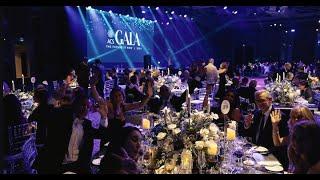Комментарии:

but if those changes were written on porpusal and just result of musical intuition, It means Ringo was a metronome itself
Ответить
I assume that this was not planned before. They Beatles simply were not able to keep the timing and count to four. So they came out with odd meters. 😂
Ответить
The intro to "Drive my car" and "She said, she said" both have interesting time signature elements as well.
Ответить
The songs from The White Album were very likely the result of splicing tape together to get the desired result, regardless of time signature. Don't Let Me Down however is seen and heard in the Beatles Let It Be documentary, where John is clearly struggling to put the song together, and the miss timing shows.. My guess is that not much of it is a deliberate attempt to rock the Time Signature boat, but more of what feels right at the time. And "Hey Hey We're The Beatles" so we can do no wrong, thanks to George Martin for allowing all that to happen in a stiff white collar 1960s world. Love your sensational work David Bennett. Cheers AB 1965 (Old Ba**ard).
Ответить
Isn't the 6/8 section of 'Straw-ber-ry Fi-elds For' just a case of triol notes in 2/4? The section does not feel like a three beat signature to me.
Ответить
It was only when I started to learn (or try and learn) Beatles songs, backing myself on guitar - I started thinking 'what the heck?' So I just end up sticking to 4/4 or 3/4 or even 6/8 and just 'play it my own way'. But I reckon when they first did the songs the timing just 'happened', I don't think they 'musically' worked it out?
Ответить
Having written 100's of songs myself, a songwriter typically has no care about the time signature and, most of the time, a song is written music first and, however that sounds best when practicing the new music, and during the writing process, there is usually no concern about time signature. So, most of these example, while they make the songwriter look like he/she knows exactly what they are doing when the time signature changes, that is usually not the case.
Ответить
I love the post-hoc idea that if no instruments were playing, John had no idea how many beats there were. What a laugh.
Ответить
This particular video is an example of why I enjoy listening to David Bennett. Although it is obvious that he is as much a Beatles fan as every 10-year-old in 1964, rather than go on and on about "the genius" of the lads based on what actually might seem like either a mistake or a "it just felt right" about a part in a song. He will assume it was a "just felt right" thing. Which is probably correct. David pointing out that the issue with the fifth beats in things like Don't Let me Down, etc is, it probably just felt right. But I have been on those pages where folks are discussing the change in the earth's rotation based on Paul obviously going flat on purpose because in conjunction with George's harmony and blah blah it creates a brand-new unknown note that blah blahs the blah. Thank you, David.
Ответить
I think the verses in all you need is love are in 7/4 and the the chorus is in 4/4.
Ответить
I think it's a great example of a band playing and writing to feel rather than worrying about the technical side of music. They all knew just what felt and sounded good and done it.
Ответить
That's why they call them The BEATles.
Ответить
can you do something on the weird polyrhythm stuff going on in Bowie's Up The Hill Backwards?
Ответить
Funny how people sued the Beatles for “plagiarizing”. Yet, the Beatles never sued everyone else who copied them: specially Oasis
Ответить
I have the music for Here Comes the Sun. The 3rd (3/8) and 4th (2/8) measure from your example is combined into 5/8. Either way it comes out the same. It goes to show how good Ringo was in all those songs that had changes in time signatures.
Ответить
Anybody with their roots in blues would be acquainted with an extra rest and the like...Listen to Johnny Cash and you will
hear the same thing. It just feels right or it brings attention to an important line. All the old blues guys did that.

The coolest use of changing time signatures happens in „Being for the benefit of Mr Kite“, where the signature moves from 4/4 to 6/8 when it says „and of course Henry the horse dances the waltz“. I always have to smile when I listen to that part.
Ответить
We can work it out is one of the most interesting examples of metric wizardry.
Ответить
Why is there a different voice, not John's, in Strawberry Fields?
Ответить
Perfect explanation. I consider "All you need is love" as one of my favorite rythm change Beatles song.
Ответить
The first one I noticed as a child was, we can work it out but that's not that weird it's straightforward.
Ответить
Honoroble mention is All you need is Love
Ответить
Feel. Feel is the only answer. It answers every question. They all had their own feel. So their feel radar was sharp. They all understand feel. Like we understand their collective feel :)
Ответить
i kid you not i just got an ad for pianote where you’re in it before the video started. spooked me
Ответить
Any clips of David's that aren't Beatles related? A video without mentioning them would be the ultimate dare.
Ответить
All thanks to Rita, she was a lovely METER maid😄
Ответить
Somebody keeps singing F instead of G on the third eighth note of those 6/8 bars in Strawberry Fields
Ответить
Huh, I'd never noticed Ringo's continuation of 4/4 through that 3/4 segment of "Happiness." Hmm, maybe that's where Bonham got the inspiration for his drumming in "Black Dog."
Ответить
I take a 'mid' position on whether John deliberately added beats. As stated, he probably composed a extra beat(s) into songs, naturally. However, he was acutely aware he'd done so, imo.
"I have such a weird rhythm scene going on - it's me double off beats." John Lennon. (Though I don't know what JL meant by double off beats, LOL.)

The extra beat sounds like a pick-up, perhaps the beat is derived from the vocal rhythm.
Ответить
I recently saw a video of Ringo saying he never learned how to play double strokes (a literal rudimentary foundation of drumming,) so I very much doubt he knew he was playing a polymeter
Ответить
How about Hey Jude right around the "na na na . . " part. I believe there is a bar of 2/4 in there.
Ответить
Lucy In The Sky With Diamonds has a relatively straight forward change from 3/4 to 4/4. The verses are in 3/4, the chorus in 4/4
Ответить
That singing voice is hideous, though)
Ответить
Check out "Limelight" by Rush. It goes from 7/4 to 3/4
Ответить
Great stuff. One thing in the thumbnail that caught my eye was the picture of Paul with the 3/4 time signature.
Does anyone know which songs in Waltz time McCartney wrote? I don’t mean his little sidesteps into 3/4 in Blackbird or USSR, but full songs. I know Lennon did a ton of songs in 3/4, but Macca?

Am I distracted or no one mentioned I Want You She's So Heavy?
Ответить
Do you think these types of imperfections (spontaneous one bar time-changes, changing time signatures on a whim, etc...) drove George Martin crazy, knowing how professionally trained he was in music?
Ответить
Amazing clip, David what's that lovely piano tune at the end?
Ответить
A big question. Considering that "Martha my dear" is not a slow song, but a fast song, don't you think it's more appropriate to consider it in 2/4, rather 4/4?
Ответить
DIVINGBEATLE MENTIONED
Ответить
I’m not that good with music theory, but in I Want You She’s so Heavy in the second verse after that bluesy instrumental, it seems the beat different than the first verse. The word “i want you” sang a bit faster in the second one.
Ответить
That's. cool. Thank you.
Ответить
First example: This is what fermatas are for.
Curious observation: In pop music there is a very strict rhythm, but artists interpret and improvise the melody and riffs. I nclasical, there is more adherence to the notes, but less to the timing when performing.

Hi David, there's the classic, A Day In The Life, which seems to go from one time signature in the beginning, "I read the news today, oh boy..." then possibly changes with "I'd like to turn you on..." through the chaotic symphonic transition to Paul's, "Woke up, got out of bed..." and back to John's dreamy, "ah......." and then back into, "I read the news today oh boy," but it's faster the second time and then symphonic chaos and the final chord.
Ответить
642
Ответить
The Beatles groove is like the difference between analog and digital. Analog represents the variations in reality and digital puts the world into pre-sized buckets which approximate reality. Yes, GPS and clocks need to be precise, but music, art, and literature need to breathe.
Ответить
In all of the Victorian Circus Chaos of what is Being for the Benefit of Mr Kite lays a beautiful signature change 🎪
Ответить
WHAT IS A TIME SIGNATURE!!!!!?????????
Ответить





![Emeli Sandé - Read All About It (pt III) [Lyrics On Screen] Emeli Sandé - Read All About It (pt III) [Lyrics On Screen]](https://ruvideo.cc/img/upload/ME5PYUd5QlZBYXY.jpg)




















